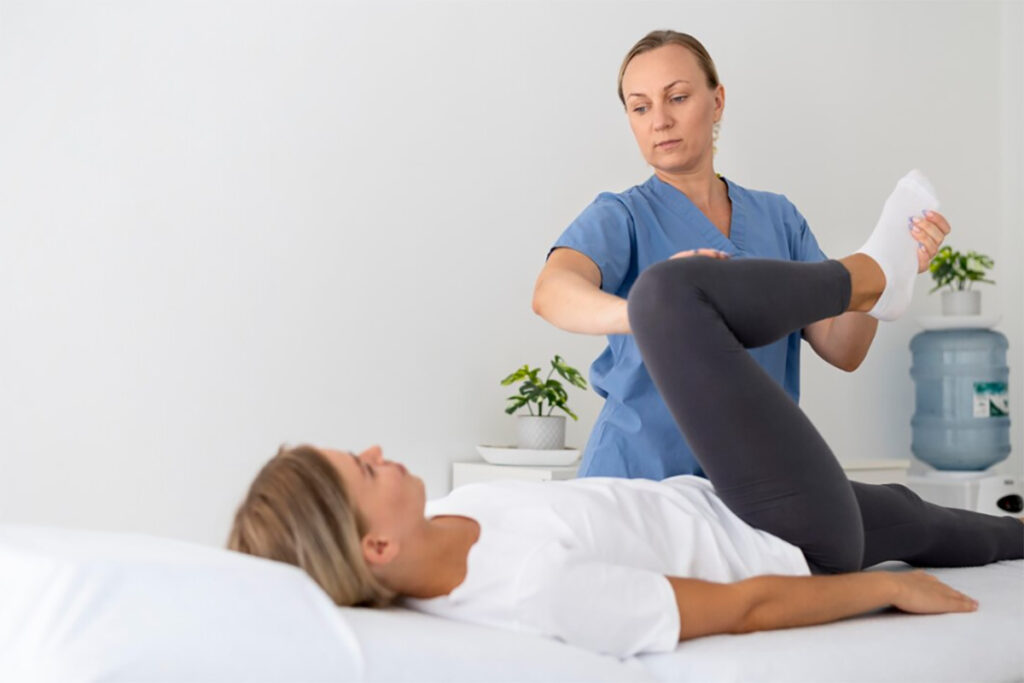
Introduction
Welcome to our comprehensive guide on navigating postpartum fitness and pelvic health. In this blog post, we’ll explore the journey of getting back into shape after childbirth, focusing on the unique considerations and challenges faced by women during this transformative period. Feeling supported in your journey back to peak fitness is vital for optimal recovery. From understanding the changes in the body postpartum to incorporating safe and effective workouts, we’ll discuss how pelvic health physical therapy can play a crucial role in supporting women’s health and well-being during their postpartum fitness journey.
1. Understanding Postpartum Changes
After childbirth, women experience significant physical and hormonal changes as their bodies recover from pregnancy and delivery. These changes can include:
- Muscle weakness and abdominal separation (diastasis recti)
- Pelvic floor dysfunction, including pelvic organ prolapse and urinary incontinence
- Hormonal fluctuations and mood changes
- Changes in posture and alignment
- Understanding these postpartum changes is essential for developing a tailored approach to fitness that promotes healing and recovery while minimizing the risk of injury.
2. Safe and Effective Workouts
When it comes to postpartum exercise, the key is to start gradually and listen to your body. Here are some safe and effective workouts to consider:
- Walking: A gentle yet effective way to ease back into physical activity, walking can improve cardiovascular health and boost mood without putting excessive strain on the body.
- Pelvic Floor Exercises: Incorporating pelvic floor exercises, such as Kegels and deep core engagement, can help strengthen the pelvic floor muscles and prevent or alleviate issues such as urinary incontinence and pelvic organ prolapse.
- Core Strengthening: Focus on rebuilding core strength gradually, paying attention to diastasis recti and avoiding exercises that exacerbate abdominal separation. Pilates and specific core exercises tailored to postpartum recovery can be beneficial.
- Low-Impact Cardio: Opt for low-impact cardio exercises such as swimming, cycling, or using an elliptical machine to improve cardiovascular fitness without stressing the joints and pelvic floor.
- Strength Training: Incorporate light resistance training using bodyweight exercises or resistance bands to build overall strength and muscle tone gradually.
It’s essential to prioritize proper form, alignment, and breathing techniques during workouts to avoid exacerbating postpartum issues and promote optimal recovery.
3. The Role of Pelvic Health Physical Therapy

Pelvic health physical therapy can be invaluable for women during the postpartum period. Here’s how it can help:
- Individualized Assessment: A pelvic health physical therapist can conduct a thorough evaluation to assess pelvic floor function, muscle strength, and alignment, identifying any areas of weakness or dysfunction.
- Targeted Treatment: Based on the assessment findings, a personalized treatment plan can be developed to address specific postpartum issues, such as pelvic floor weakness, diastasis recti, or pelvic pain.
- Pelvic Floor Rehabilitation: Pelvic health physical therapy may include exercises, manual therapy techniques, biofeedback, and education to promote healing, strengthen pelvic floor muscles, and improve overall function.
- Education and Guidance: Pelvic health physical therapists provide valuable education on postpartum recovery, safe exercise practices, and strategies for optimizing pelvic health during workouts and daily activities.
- Support and Empowerment: Beyond physical treatment, pelvic health physical therapy offers emotional support and empowerment, helping women navigate the challenges of postpartum recovery with confidence and resilience.
FAQ Section
Q: When is it safe to start exercising after childbirth?
A: The timing of postpartum exercise depends on various factors, including the type of delivery, overall health, and any complications during pregnancy or childbirth. In general, most healthcare providers recommend waiting until after the postpartum checkup (usually around six weeks postpartum) before starting or resuming exercise. However, individual recommendations may vary, so it’s essential to consult with your healthcare provider before beginning any exercise program.
Q: Can postpartum exercise worsen pelvic floor problems?
A: While exercise is generally beneficial for postpartum recovery, certain high-impact activities or exercises that place excessive strain on the pelvic floor may exacerbate pelvic floor issues such as urinary incontinence or pelvic organ prolapse. It’s crucial to choose exercises that are appropriate for your postpartum stage and condition and seek guidance from a pelvic health physical therapist if you have any concerns.
Q: What are some signs that indicate I may need pelvic health physical therapy after childbirth?
A: Signs that you may benefit from pelvic health physical therapy after childbirth include pelvic pain, urinary or fecal incontinence, difficulty with bladder or bowel control, pelvic organ prolapse, diastasis recti (abdominal separation), or persistent discomfort during sexual intercourse. If you experience any of these symptoms or have concerns about your pelvic health postpartum, consulting with a pelvic health physical therapist can provide valuable guidance and support.
Q: How can pelvic health physical therapy help with postpartum recovery and fitness goals?
A: Pelvic health physical therapy can support postpartum recovery and fitness goals by addressing pelvic floor dysfunction, optimizing core strength and stability, promoting proper alignment and movement patterns, and empowering women with the knowledge and tools to safely and effectively return to exercise and daily activities. Whether you’re dealing with pelvic pain, urinary incontinence, diastasis recti, or other postpartum issues, pelvic health physical therapy offers personalized care and guidance to help you achieve your health and fitness goals with confidence.
Conclusion
In conclusion, getting back into shape after postpartum is a journey that requires patience, self-care, and a focus on pelvic health and wellness. By understanding the changes in the body postpartum, incorporating safe and effective workouts, and seeking support from pelvic health physical therapy, women can achieve their fitness goals while promoting healing and recovery. Remember to listen to your body, prioritize proper form and alignment, and consult with healthcare professionals as needed to ensure a successful postpartum fitness journey. Our Pelvic and Women’s Health Specialists here at WildHawk Physical Therapy in Asheville, NC are here to support you every step of the way, providing expert guidance and personalized care to help you thrive in your postpartum recovery and beyond. Let us be in your corner to help you every step of the way on your journey back to peak fitness!








